Sekihan is a traditional Japanese dish in which the color and flavor of adzuki (also known as azuki or aduki) beans infuse the glutinous rice. In addition to its distinctive reddish hue, the soft, sticky texture of the rice and the delicate flavor of the beans are key characteristics of this dish, and it is known as a staple for celebrations in Japan.
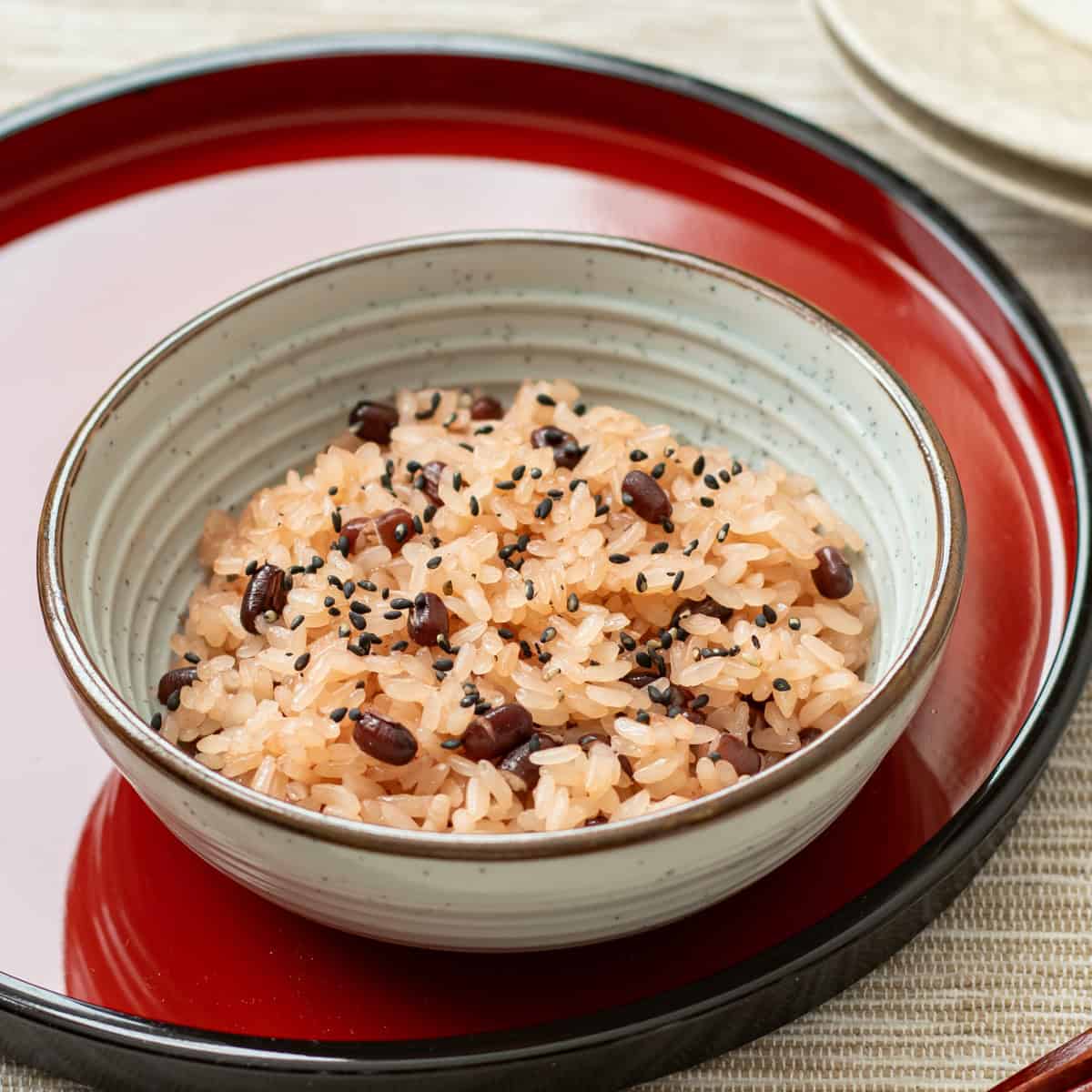
Jump to:
What is Sekihan?
Sekihan is a traditional Japanese dish made by cooking glutinous rice with adzuki beans and seasoning it lightly with salt. Additional salt and black sesame seeds are often sprinkled on top to enhance the flavor and visual appeal.
The term "seki" means red, and "han" refers to rice. As the name suggests, this dish was originally made by steaming red rice, but over time, adzuki beans, which are more readily available, came to be used to achieve the reddish hue (in some regions, other types of beans may be used).
The most distinctive feature of this dish is its color. In Japan, red was believed to have the power to ward off evil spirits, and since rice was once considered a luxury food, there was a tradition of offering cooked red rice to the gods. Over time, it came to symbolize protection against misfortune and became a common feature at celebratory occasions. Therefore, even today, it remains a staple at celebrations such as New Year’s, the birth of a child, milestones in a child's growth, and kanreki (the 60th birthday) celebrations.
While making this dish doesn’t involve complicated steps, it does take some time and effort. There are simplified recipes using a rice cooker (or pot), but here, I’d like to share a traditional sekihan recipe using a steamer, which requires a little more time and effort. The reason for this choice is that there is a noticeable difference in texture between using a rice cooker and using a steamer. Whether you are making sekihan for the first time or have only tried it with a rice cooker, I hope you will try this traditional method and experience its authentic texture and flavor.
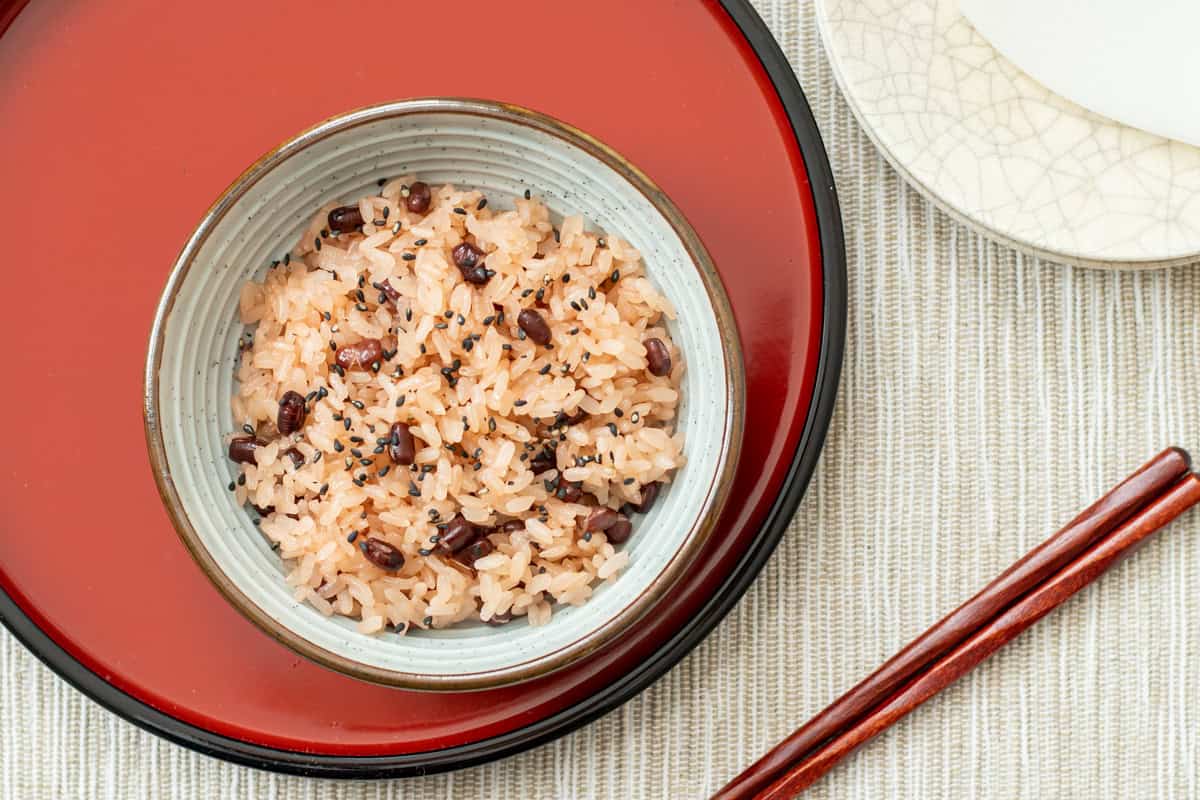
Essential tips for making perfect sekihan
There are several key points to keep in mind for making delicious sekihan. By following these tips, you should be able to make this dish without any issues, so be sure to review them carefully.
Removing the bitterness from the adzuki beans
Sekihan is a dish that uses the cooking liquid from adzuki beans to add both color and flavor to glutinous rice. However, the skins of adzuki beans contain bitterness, so simply simmering them will result in a bitter taste in the liquid.
To avoid this, it is important to pre-simmer the beans. Start by briefly simmering the beans, discarding the water, and then simmering them again in fresh water. This will remove the bitterness from adzuki beans.
Thoroughly soaking the glutinous rice
While Japanese rice (short grain rice) is typically soaked for at least 30 minutes after rinsing, glutinous rice used for traditional-style sekihan should be soaked much longer: at least 6 hours (ideally 8 or more). This is because traditional-style sekihan is made by steaming glutinous rice, and if the soaking time is not long enough, the rice may have a hard center.
When steaming, mix the glutinous rice and evenly distribute the cooking liquid over it
In the traditional method of making sekihan, the adzuki bean cooking liquid is added several times while steaming the glutinous rice to achieve a consistent color. Pouring the liquid unevenly can lead to patchy coloring, so make sure to apply it evenly over the rice.
Additionally, the rice needs to be mixed before each addition of cooking liquid. This helps prevent uneven steaming, resulting in a consistent texture throughout.
Differences from the rice cooker method
If you are making sekihan with a rice cooker, you can skip all the processes mentioned above except for removing the bitterness from the adzuki beans. This means that soaking the glutinous rice for just an hour is sufficient, and you don't need to mix the rice with the adzuki bean cooking liquid during cooking.
However, while this method saves time and effort, it does noticeably change the texture compared to the steaming method. When made in a steamer, the rice has a chewy, sticky consistency, whereas rice cooked in a rice cooker has a softer, more moist texture.
In Japan, sekihan is a dish typically served for celebrations. Therefore, many people feel that it is worth the extra time and effort to make it as delicious as possible, which is why this traditional preparation method remains popular today. I want to share traditional Japanese food culture, so I have also adopted this steaming method in my recipe. I hope you enjoy this traditional-style sekihan as much as we do.
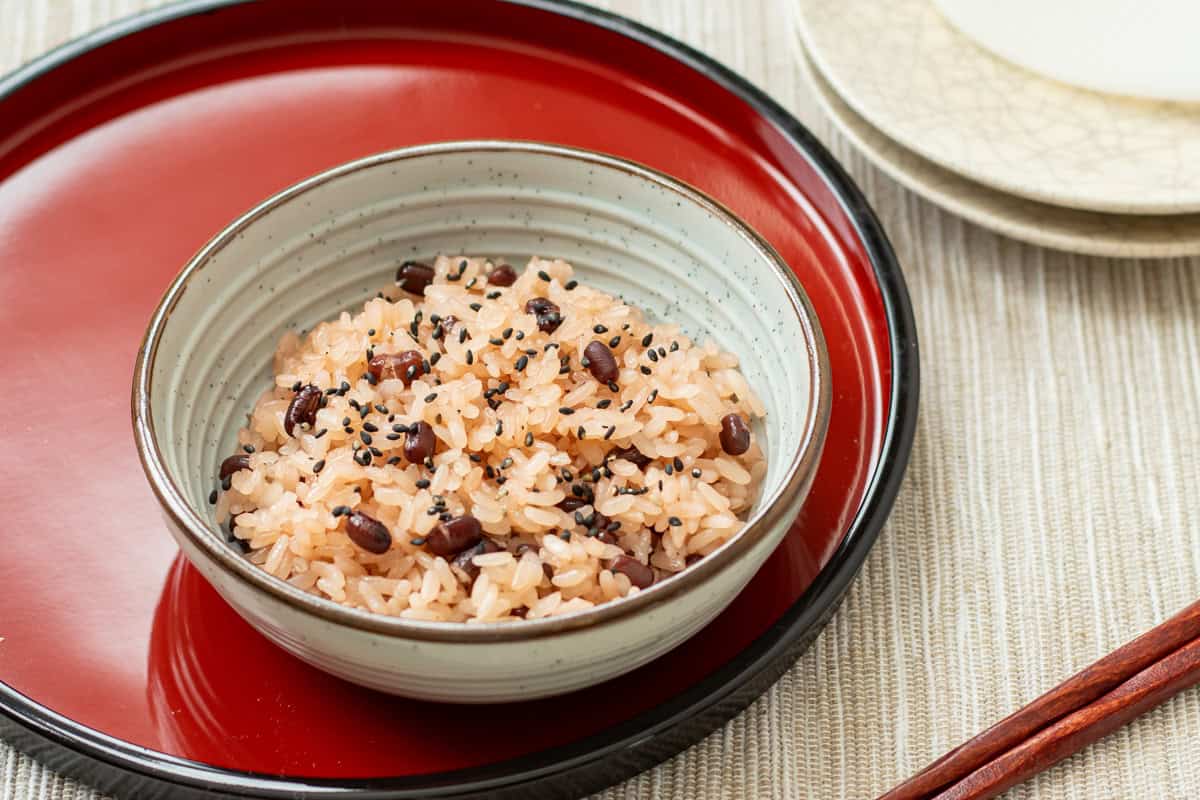
📋Step-by-step recipe
Equipment
- steamer
- steaming cloth (such as cheesecloth)
Ingredients
- 1.4 oz adzuki beans
- 4 cups water (for the adzuki beans)
- 1 ½ cups glutinous rice (sweet rice) (2 rice cooker cups for 4 servings)
- ¾ cup adzuki bean cooking liquid (prepared in step 4)
- 1 Tbsp sake
- 1 tsp salt
Toppings:
- toasted black sesame seeds
- salt
Instructions
🕒 Total: 7 hrs 55 minsYou can make this dish in a single day, but in Japan, it is common to prepare it over two days because the glutinous rice needs to soak for a long time.
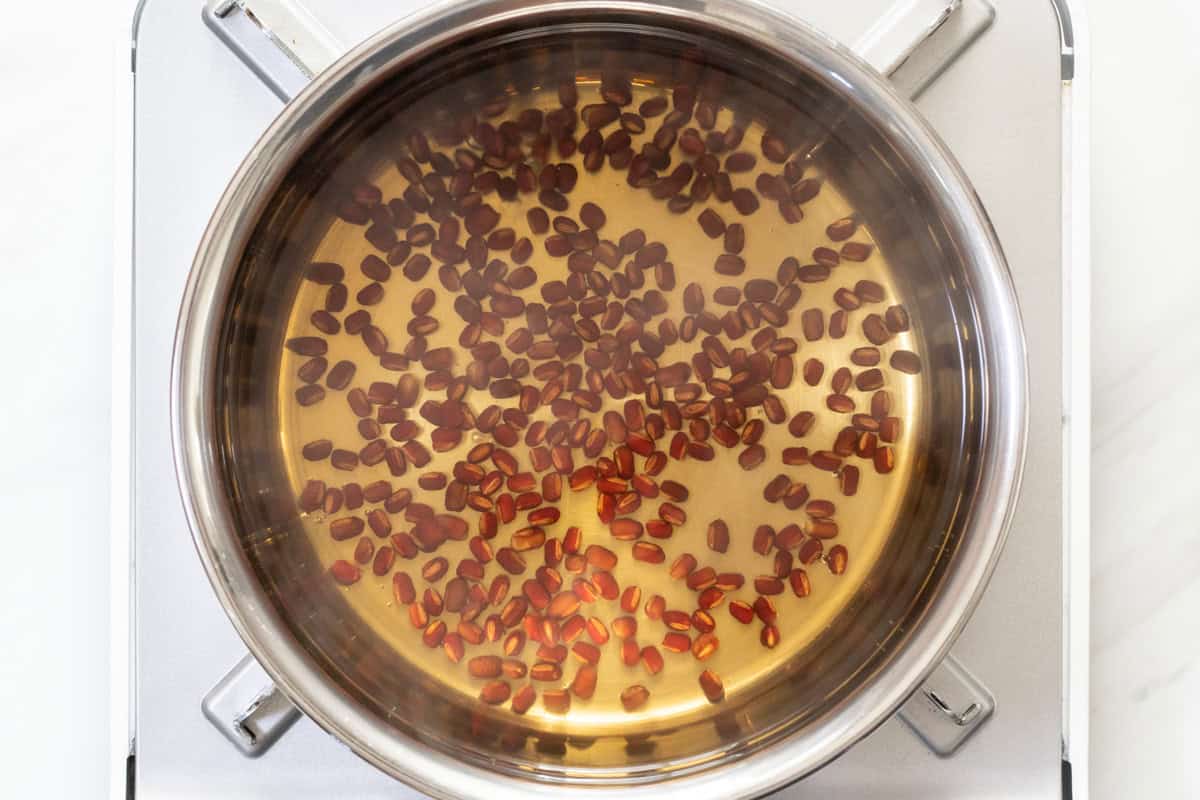
Step 1 (Day 1)
Rinse and drain the adzuki beans. Place them in a pot with plenty of water (not listed in the ingredients) and bring it to a boil. Once boiling, reduce the heat to medium and let it simmer for 5 minutes.
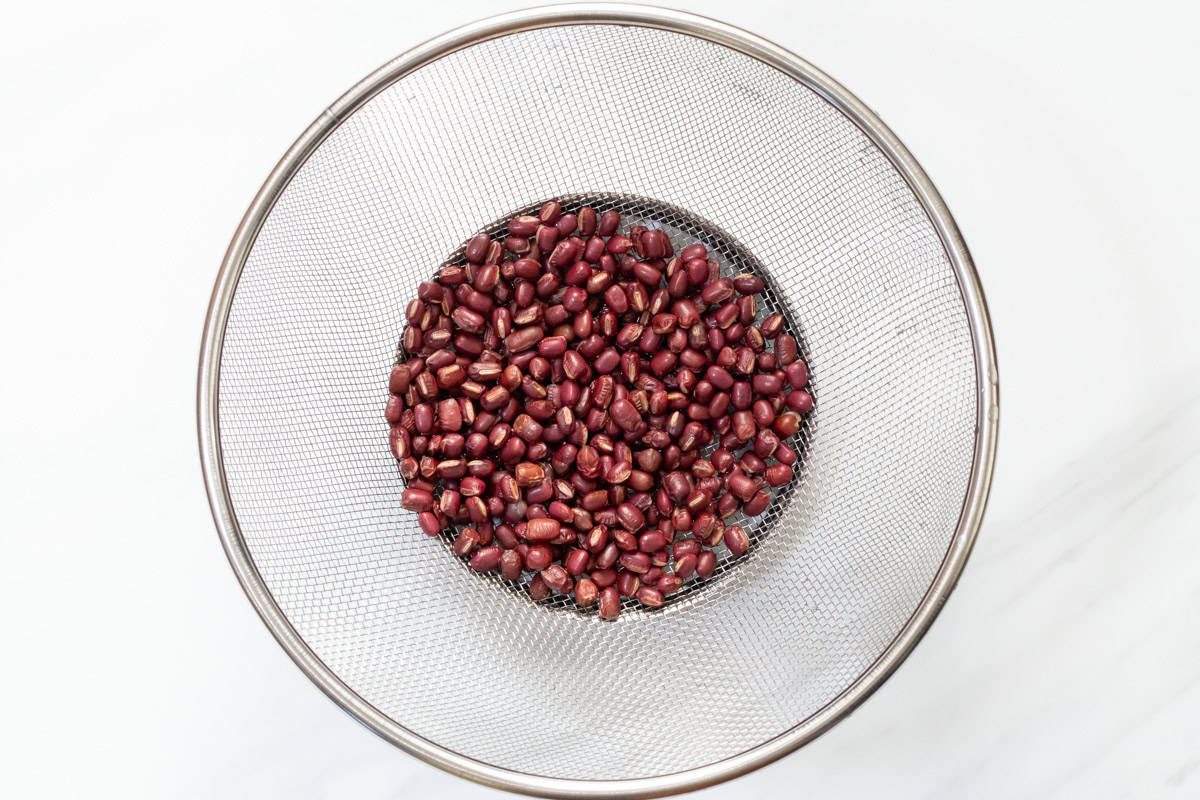
Step 2
Drain the beans in a sieve and discard the cooking liquid to remove any bitterness.
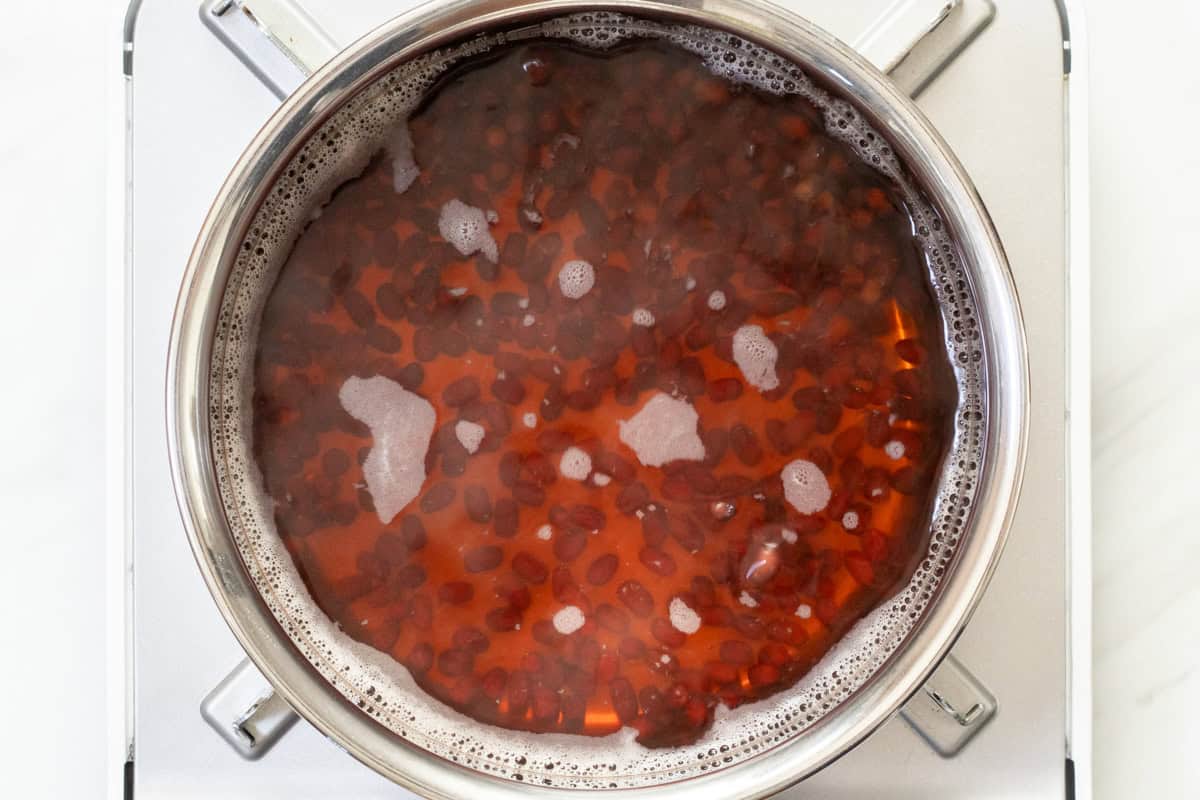
Step 3
Lightly rinse the pot, then add the beans and water (as specified in the recipe) again, and bring it to a boil. Once boiling, reduce the heat to low and let it simmer for about 20 to 40 minutes. The cooking time can vary depending on how long it has been since the beans were harvested. Taste one to make sure it has a "firm but edible" texture.
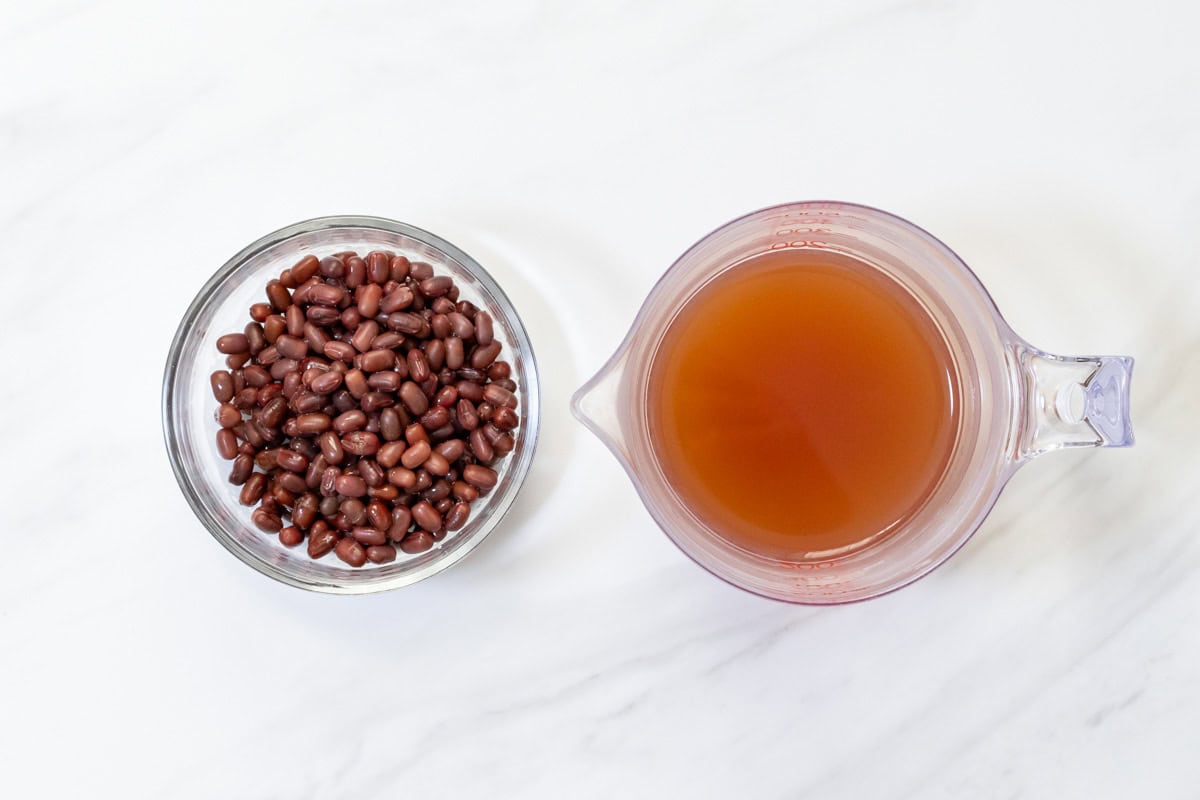
Step 4
Remove the pot from the heat and let the beans cool down. After they have cooled, transfer them to a storage container and refrigerate. For the cooking liquid, reserve ¾ cup (180 ml for 4 servings) in a measuring cup and refrigerate it as well. Do not discard the remaining cooking liquid, as it will be used later.
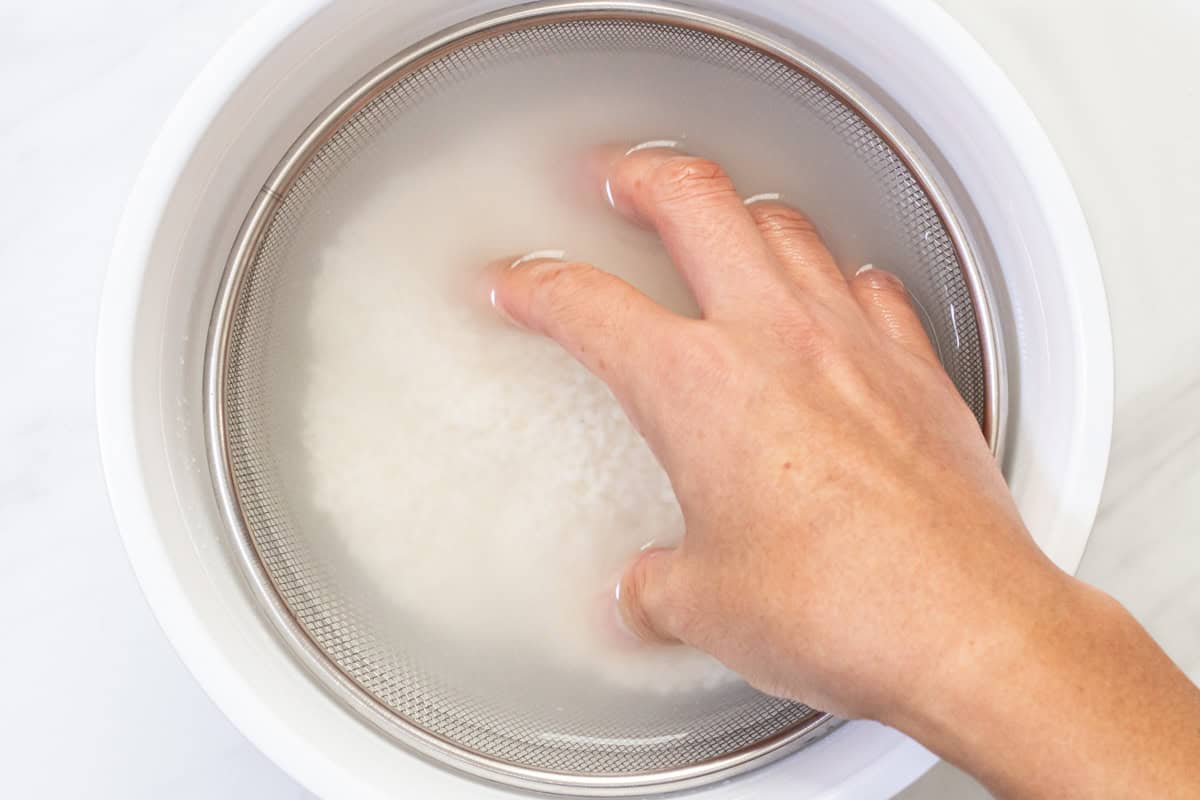
Step 5
Place a sieve over a bowl, add glutinous rice, and rinse it with water. Repeat this process several times, changing the water each time.
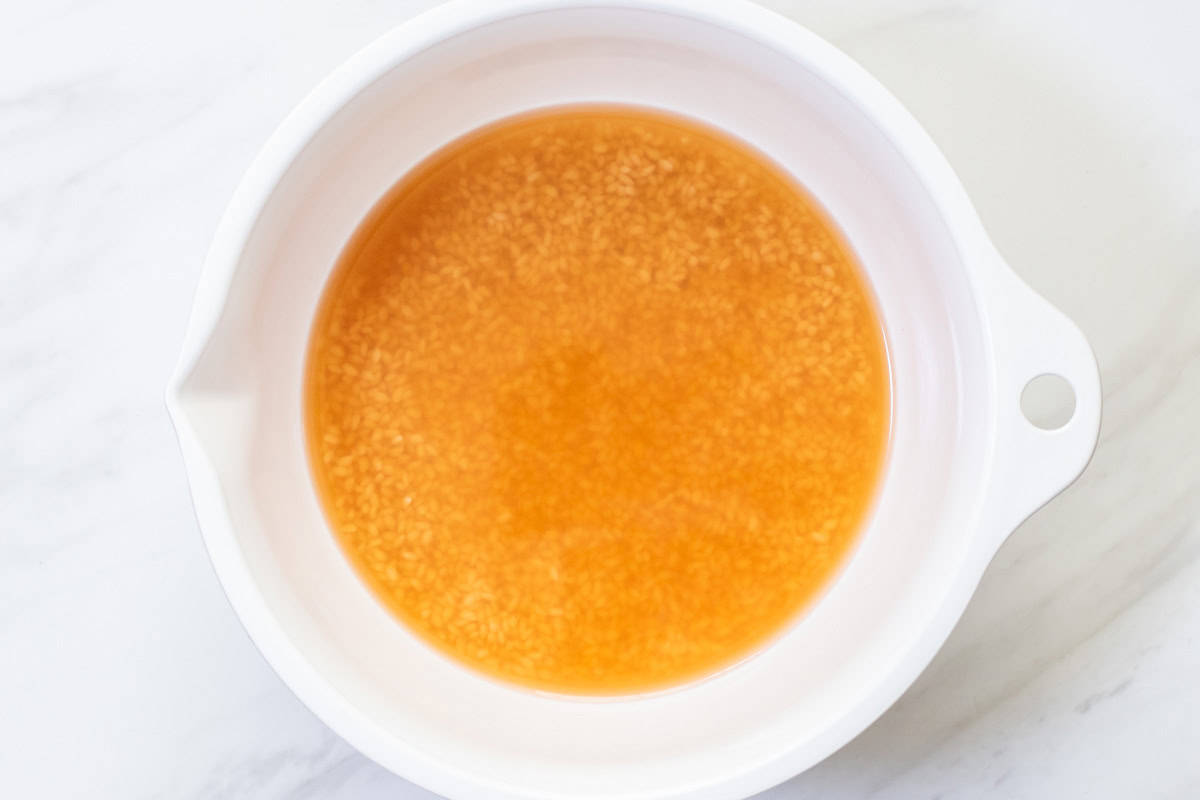
Step 6
Soak the rinsed rice in the remaining cooking liquid in a pot in the refrigerator for at least 6 hours. If the rice isn't fully submerged in the cooking liquid, add more water to ensure it is completely covered.
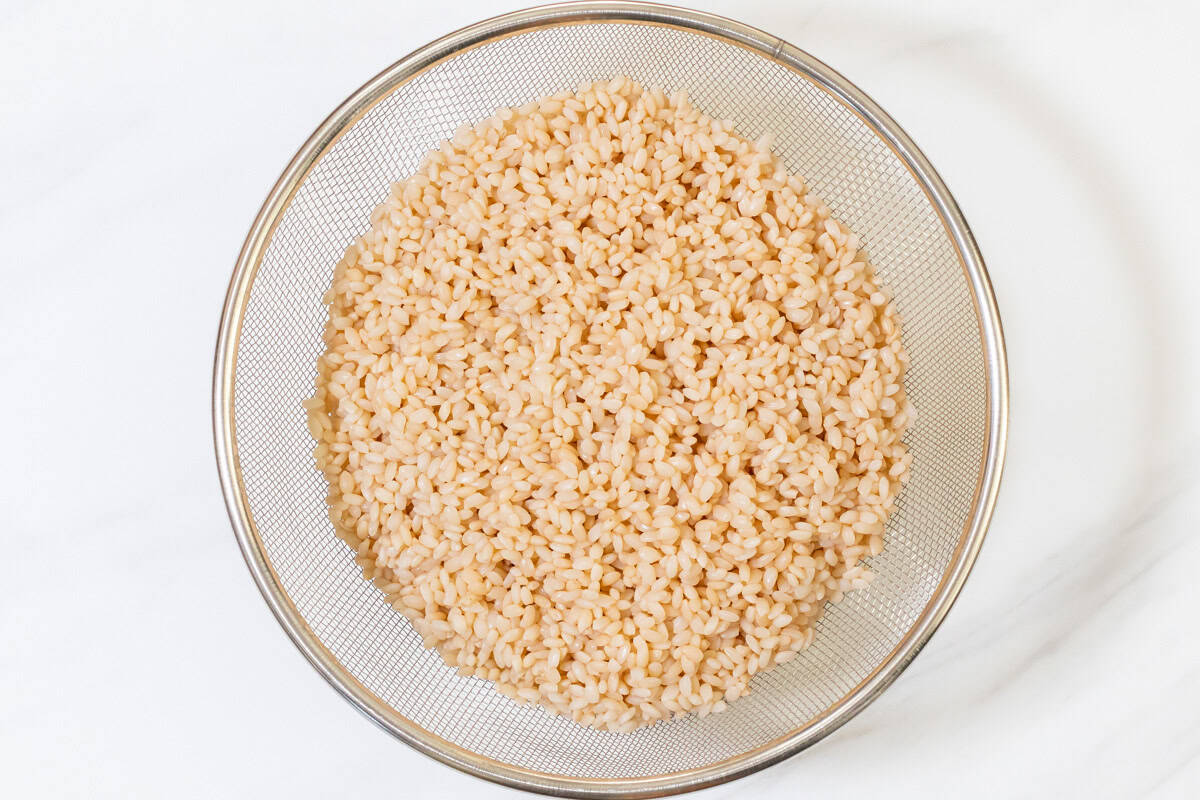
Step 7 (Day 2)
Drain the soaked glutinous rice in a sieve and discard the soaking water.
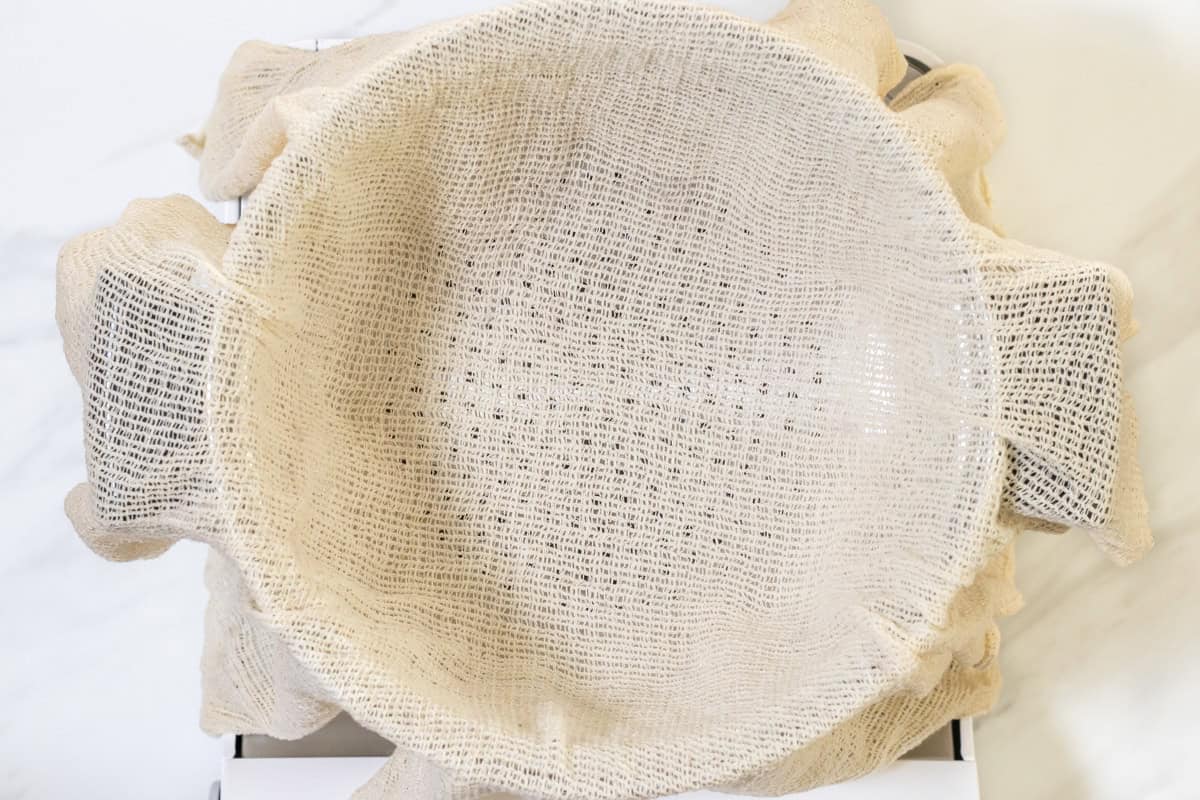
Step 8
Fill a steamer with plenty of water and bring it to a boil. Once the water is boiling, wet a steaming cloth, wring it out well, and line the steamer with it.
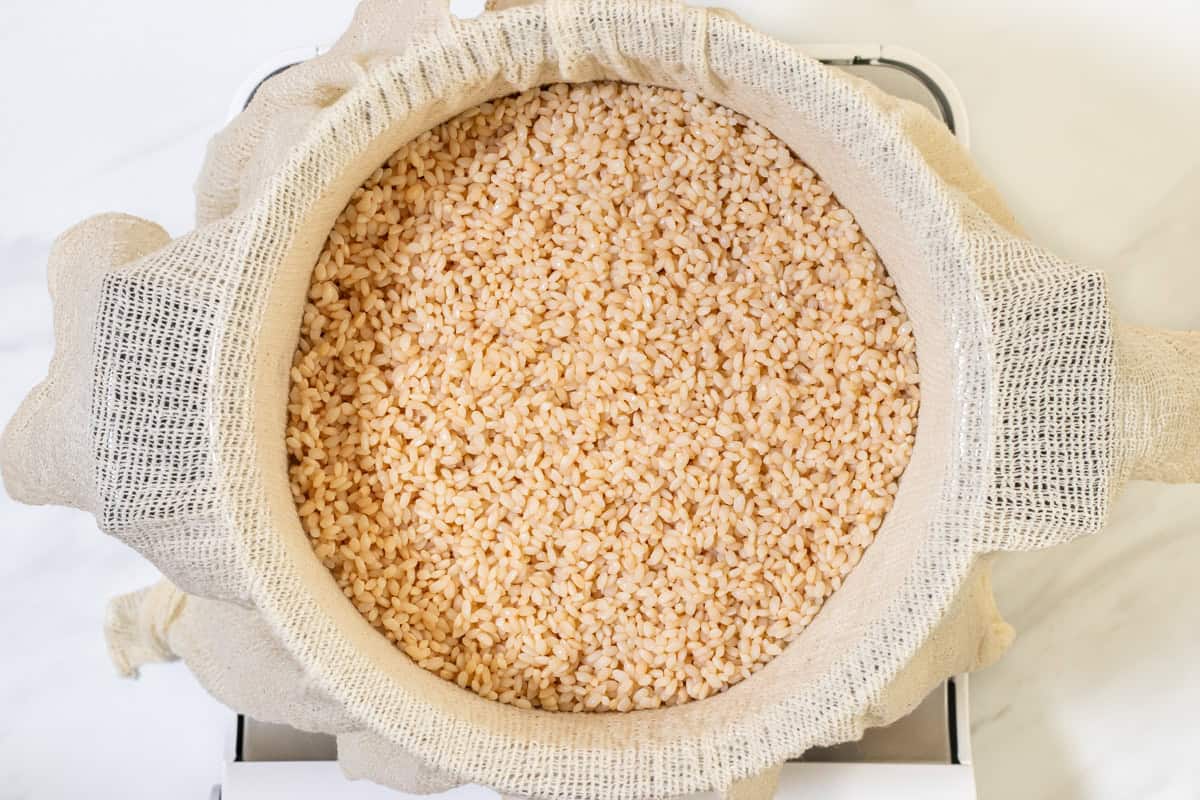
Step 9
Evenly spread the glutinous rice on the steaming cloth inside the steamer. Fold the edges of the cloth inward to cover the rice, place the lid on the steamer, and steam it over high heat for 15 minutes.
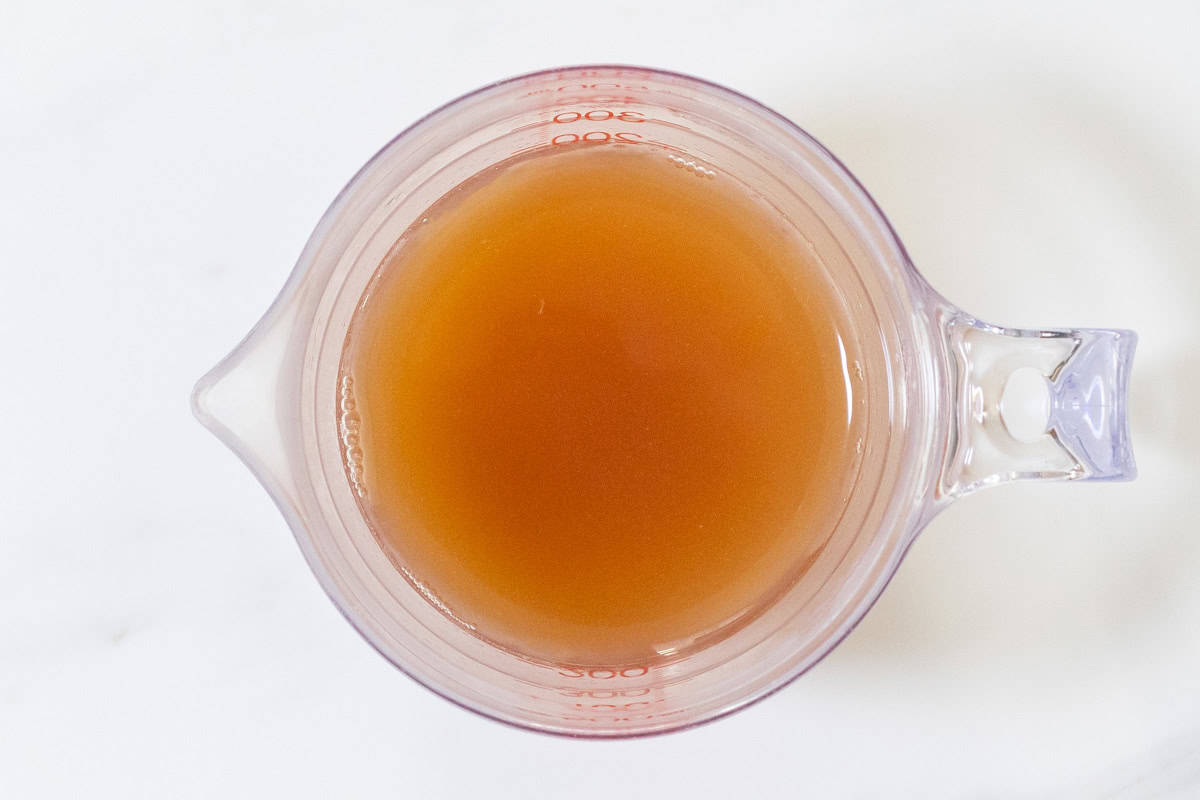
Step 10
Mix salt and sake into the reserved cooking liquid from the refrigerator.
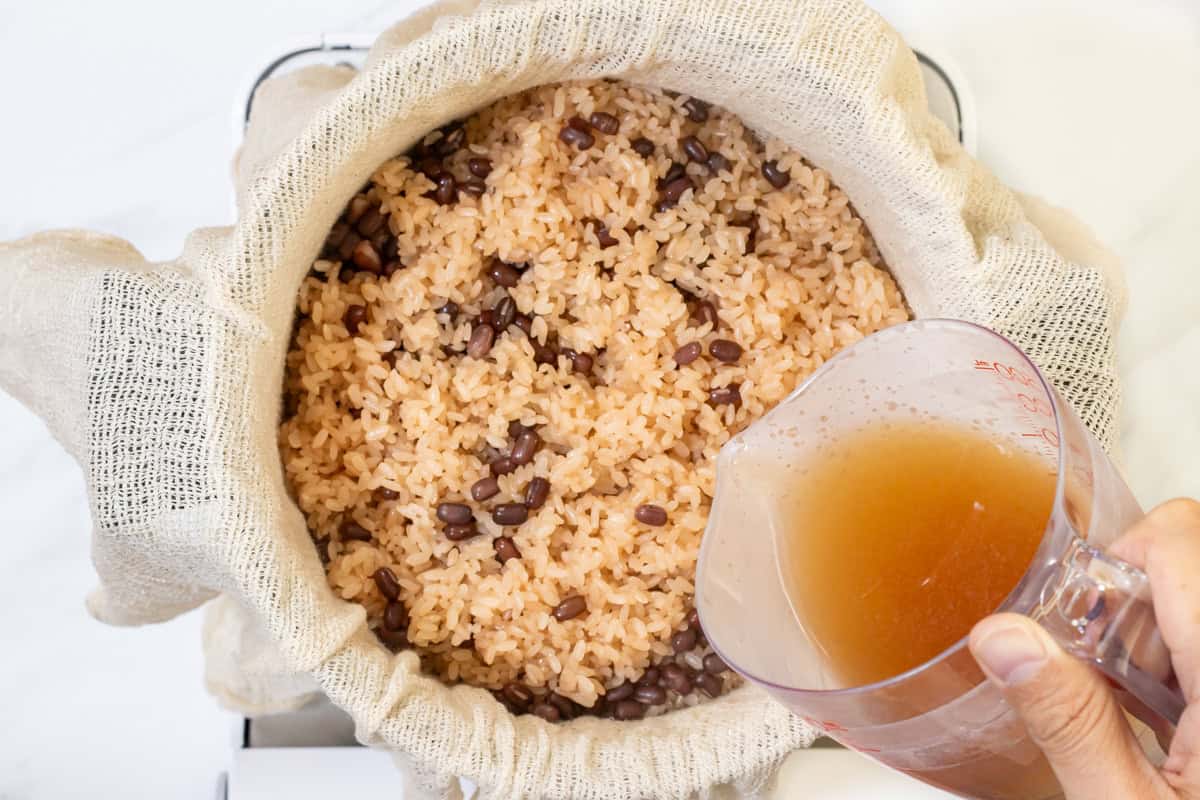
Step 11
Turn off the heat and carefully open the lid and steaming cloth to avoid burns from the steam. Add the adzuki beans from the storage container and mix them into the rice, then pour about one-third of the seasoned cooking liquid evenly over the mixture. Fold the steaming cloth back over the rice, cover the steamer, and steam it again over high heat for about 10 minutes.
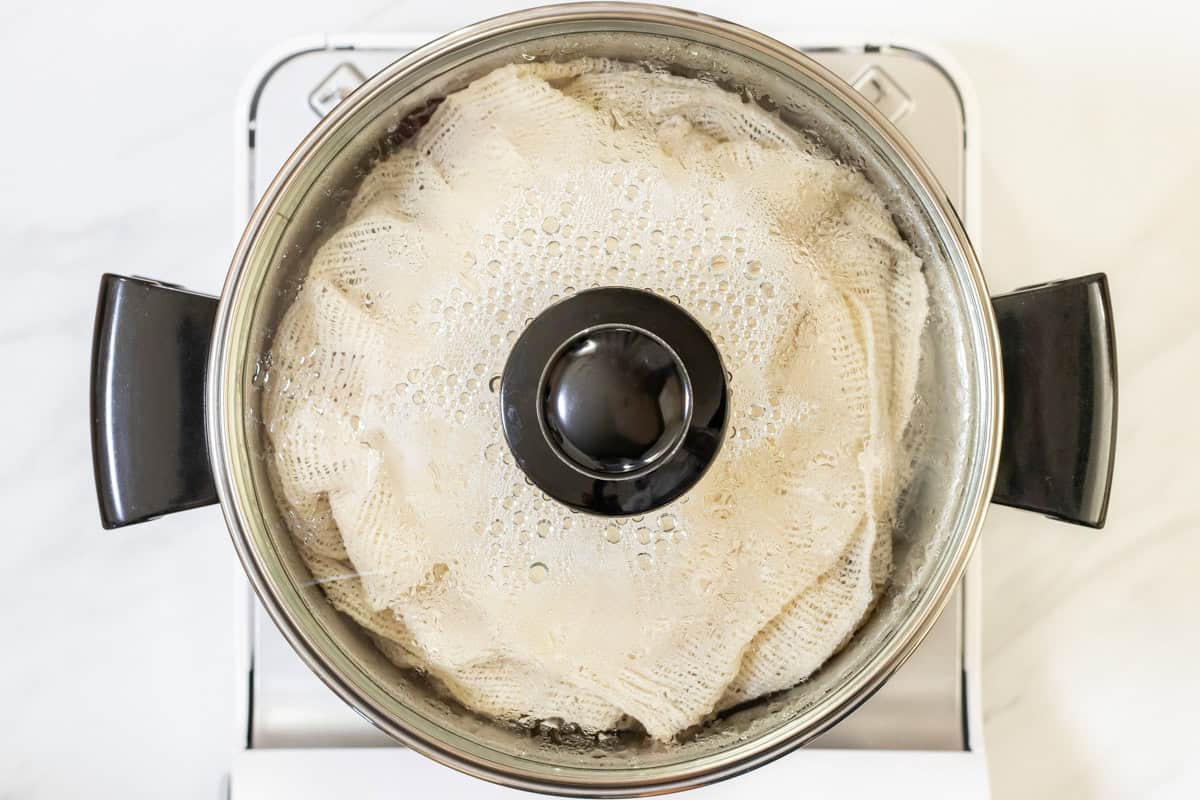
Step 12
Repeat the same step as the previous one, except for adding adzuki beans. If the water in the steamer is running low, add more hot water that has been boiled separately.
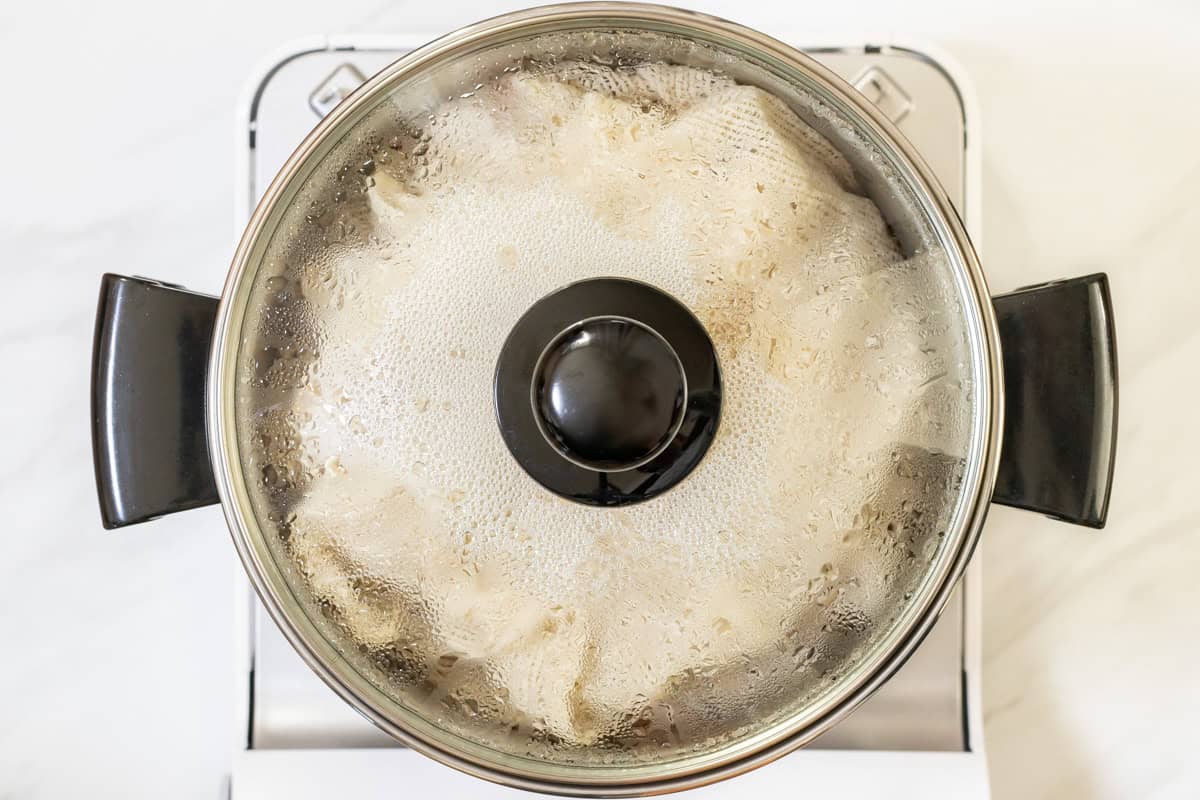
Step 13
Repeat the previous step once more, but steam for 5 minutes this time. In other words, the total steaming times will be 15 minutes, 10 minutes, 10 minutes, and 5 minutes.
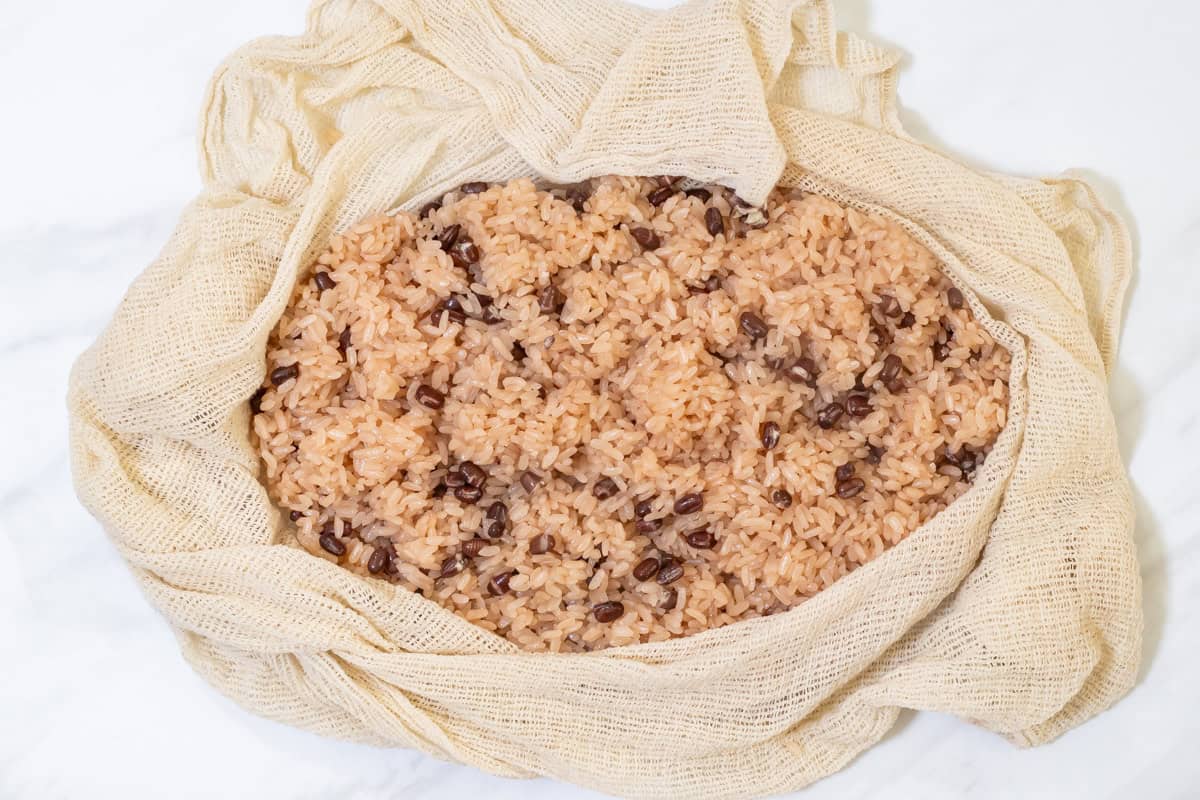
Step 14
Take a bite of the rice, and if it is still firm, continue steaming for a few more minutes. Once it is done, move the rice to a different spot with the steaming cloth to prevent it from becoming soggy from the steam.
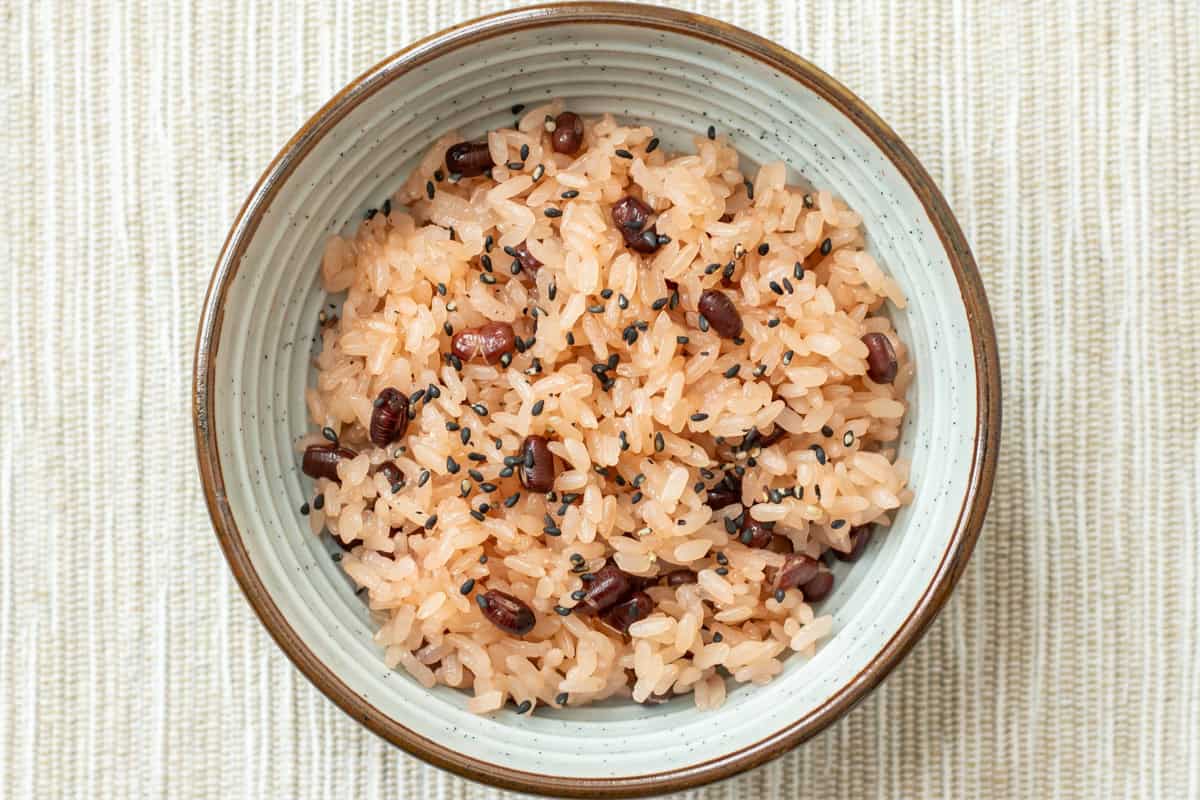
Step 15
Serve in individual dishes and sprinkle with black sesame seeds and salt to taste. In Japan, to make sekihan visually appealing, it is often served on a flat dish or in a lacquered box.
To store
You can store it in the refrigerator for up to 3 days.

If you try this recipe, I’d love to hear what you think. Please consider leaving a review and star rating in the comments below. If you enjoyed it, I’d really appreciate it if you shared it with your friends.
Another adzuki bean recipe you'll love
Recipe card

Traditional-Style Sekihan (Japanese Red Rice with Adzuki Beans)
Equipment
- steamer
- steaming cloth (such as cheesecloth)
Ingredients
- 1.4 oz adzuki beans
- 4 cups water (for the adzuki beans)
- 1 ½ cups glutinous rice (sweet rice) (2 rice cooker cups for 4 servings)
- ¾ cup adzuki bean cooking liquid (prepared in step 4)
- 1 Tbsp sake
- 1 tsp salt
Toppings:
- toasted black sesame seeds
- salt
Instructions
- (Day 1) Rinse and drain the adzuki beans. Place them in a pot with plenty of water (not listed in the ingredients) and bring it to a boil. Once boiling, reduce the heat to medium and let it simmer for 5 minutes.
- Drain the beans in a sieve and discard the cooking liquid to remove any bitterness.
- Lightly rinse the pot, then add the beans and water (as specified in the recipe) again, and bring it to a boil. Once boiling, reduce the heat to low and let it simmer for about 20 to 40 minutes. The cooking time can vary depending on how long it has been since the beans were harvested. Taste one to make sure it has a "firm but edible" texture.
- Remove the pot from the heat and let the beans cool down. After they have cooled, transfer them to a storage container and refrigerate. For the cooking liquid, reserve ¾ cup (180 ml for 4 servings) in a measuring cup and refrigerate it as well. Do not discard the remaining cooking liquid, as it will be used later.
- Place a sieve over a bowl, add glutinous rice, and rinse it with water. Repeat this process several times, changing the water each time.
- Soak the rinsed rice in the remaining cooking liquid in a pot in the refrigerator for at least 6 hours. If the rice isn't fully submerged in the cooking liquid, add more water to ensure it is completely covered.
- (Day 2) Drain the soaked glutinous rice in a sieve and discard the soaking water.
- Fill a steamer with plenty of water and bring it to a boil. Once the water is boiling, wet a steaming cloth, wring it out well, and line the steamer with it.
- Evenly spread the glutinous rice on the steaming cloth inside the steamer. Fold the edges of the cloth inward to cover the rice, place the lid on the steamer, and steam it over high heat for 15 minutes.
- Mix salt and sake into the reserved cooking liquid from the refrigerator.
- Turn off the heat and carefully open the lid and steaming cloth to avoid burns from the steam. Add the adzuki beans from the storage container and mix them into the rice, then pour about one-third of the seasoned cooking liquid evenly over the mixture. Fold the steaming cloth back over the rice, cover the steamer, and steam it again over high heat for about 10 minutes.
- Repeat the same step as the previous one, except for adding adzuki beans. If the water in the steamer is running low, add more hot water that has been boiled separately.
- Repeat the previous step once more, but steam for 5 minutes this time. In other words, the total steaming times will be 15 minutes, 10 minutes, 10 minutes, and 5 minutes.
- Take a bite of the rice, and if it is still firm, continue steaming for a few more minutes. Once it is done, move the rice to a different spot with the steaming cloth to prevent it from becoming soggy from the steam.
- Serve in individual dishes and sprinkle with black sesame seeds and salt to taste. In Japan, to make sekihan visually appealing, it is often served on a flat dish or in a lacquered box.
Notes
- You can make this dish in a single day, but in Japan, it is common to prepare it over two days because the glutinous rice needs to soak for a long time.
- You can store it in the refrigerator for up to 3 days.

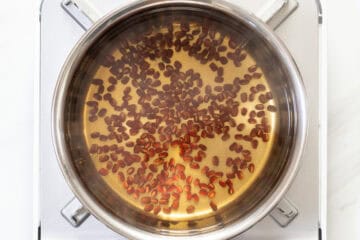
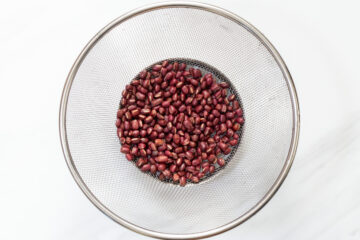
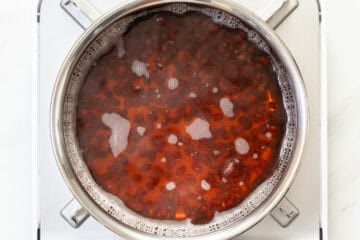
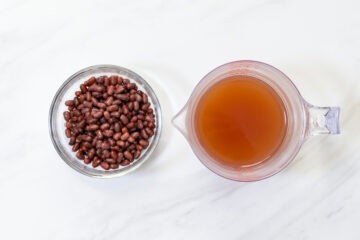

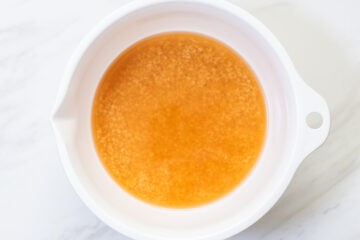
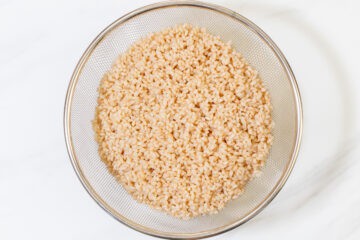
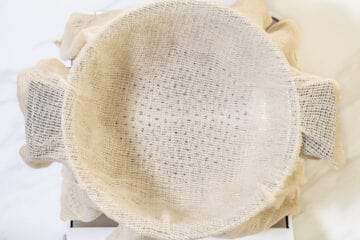
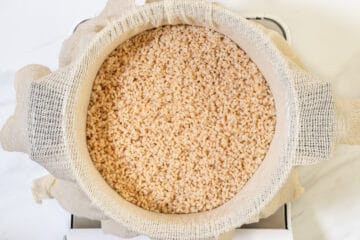
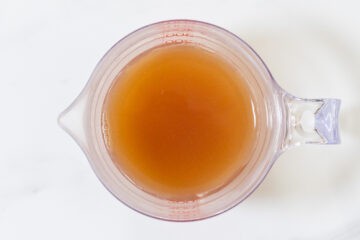

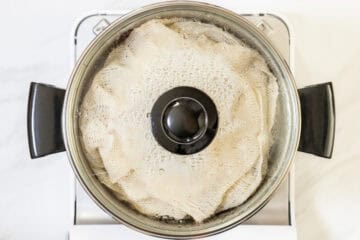




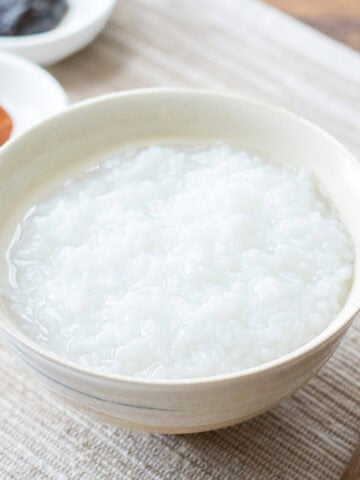

Leave a Rating and a Comment